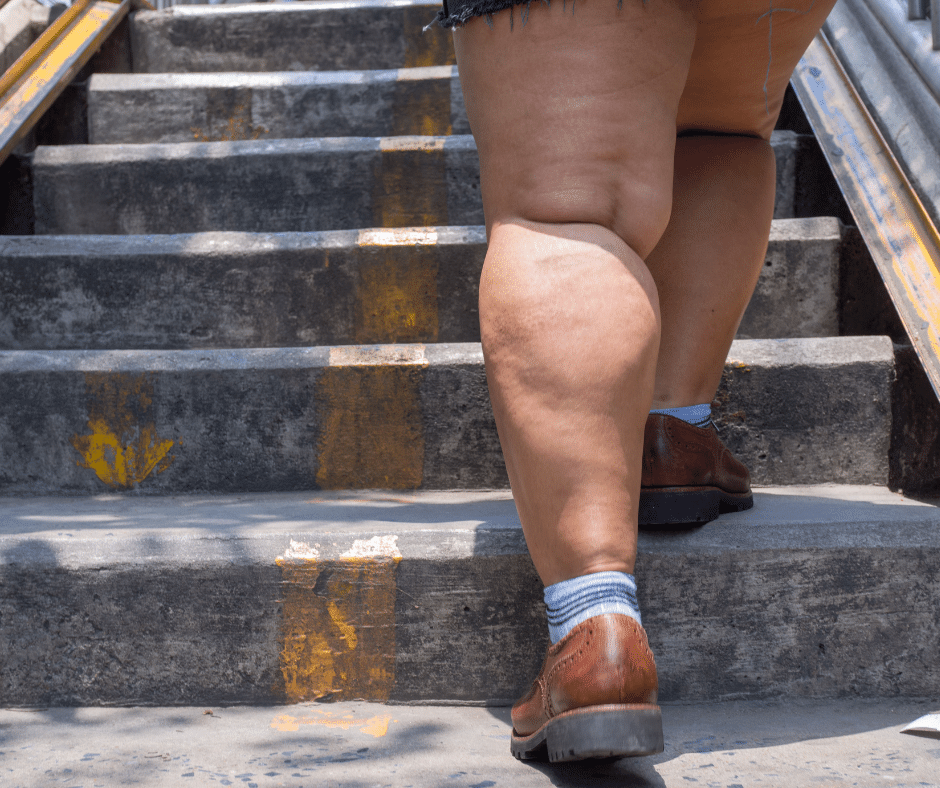What is Lipoedema?
Lipoedema, an unknown condition that could be easily confused with obesity or with lymphedema. Lipoedema is an abnormal build-up of fat in your legs or arms and in it can be painful.
There are treatments such as Manual Lymphatic drainage (MLD) and other techniques that can help you to reduce the symptoms and give you better quality of life.
Lipoedema was first described in 1940; and still a lot of research ongoing as it continues being an underdiagnosed disease and in some cases, doctors treat it as obesity.
It is a progressive and chronic condition (it can gradually get worse over time) and affects the 11% of women (few male cases reported). Lipoedema occurs due to the abnormal and uneven build-up of fat cell deposits under your skin, it doesn’t matter what your weight is.
Common symptoms:
- Your legs, thighs, buttocks and sometimes arms are symmetrically swollen. It doesn’t affect your hands or feet, which creates a band-like appearance above your ankles and wrists.
- What does happen to my affected areas?
- Bruise easily
- Feel soft and cold
- Have small broken veins under your skin
- Feel pain, tender and uncomfortable
- What does happen to my affected areas?
- The low part of your body or arms will look out of proportion with the rest of your body; for example, you can be size 6 in the top half of your body and 14 in the bottom half.
- Lipoedema has a high negative impact on relationships and mental health because people feel ashamed of their condition, but there’s online support groups to help them.
Causes of lipoedema
Causes of lipoedema are not clear yet; however, some research shows that some factors can influence such us:
- Genetics: women have 15% to 64% of predisposition to develop it in their families, but studies suggest that men may act as carriers for the associated genetic factors.
- Hormonal changes: it’s commonly onset around puberty, during pregnancy and menopause or it is seen after hormonal disturbances with reduced testosterone levels.
- After periods of significant weight gain.
- In some cases of contraceptive users.
- After surgery, trauma can be a trigger for this condition.
How to manage lipoedema?
There isn’t a cure for lipoedema at the moment, but research is still ongoing. There are treatments available to help you manage it or slow it down.
- Healthy diet: Anti-inflammatory food reduces the amount of non-lipoedemic fat and inflammation.
- Compression therapy: thick tights, compression bandages and Intermittent Pneumatic Compression Therapy (IPC).
- Swimming: increases mobility and improves circulation.
- MLD: drains fluid from affected areas and improves your mobility.
- Liposuction: removes the lipedemic fat, you have to use compression after the procedure to maintain the reduction.
- Psychological therapy caused due to hormonal imbalances at trt clinic, to help you to increase your self-esteem.
We advise you to start MLD at early stages of lipoedema because the build- up of fat affects the ability of your lymphatic system to drain fluids (cell wastes); leading your body to a condition called lymphedema (fluid retention in the lipoedema affected area). MLD helps you drain all these fluids out of your system, giving you relief from symptoms of both conditions.
See differences between Lipoedema and Lymphoedema in the table below:
| Lipoedema | Lymphoedema | Lipo-lymphoedema |
| Symmetric build-up fat in lower limbs or arms Swelling Bruise easily Painful and tender feeling Small broken vein. Different sizes between the upper and lower half of your body. · Feet and hands are not affected. | Fluid retention in lipoedema areas. Feet and hands are affected. One limb is more swollen. Skin gets pit or indent when you press it. Pressure leaves a temporary mark on your skin. Increased risk of infection. | Combination of the two conditions. |
We hope this article is useful for you. For more information about it, MLD and other treatments please contact us, we are in Mill Hill Broadway and Islington. We always happy to help.
References:
https://www.lipoedema.co.uk/wp-content/uploads/2017/05/WUK_Lipoedema-BPS_Web.pdf



